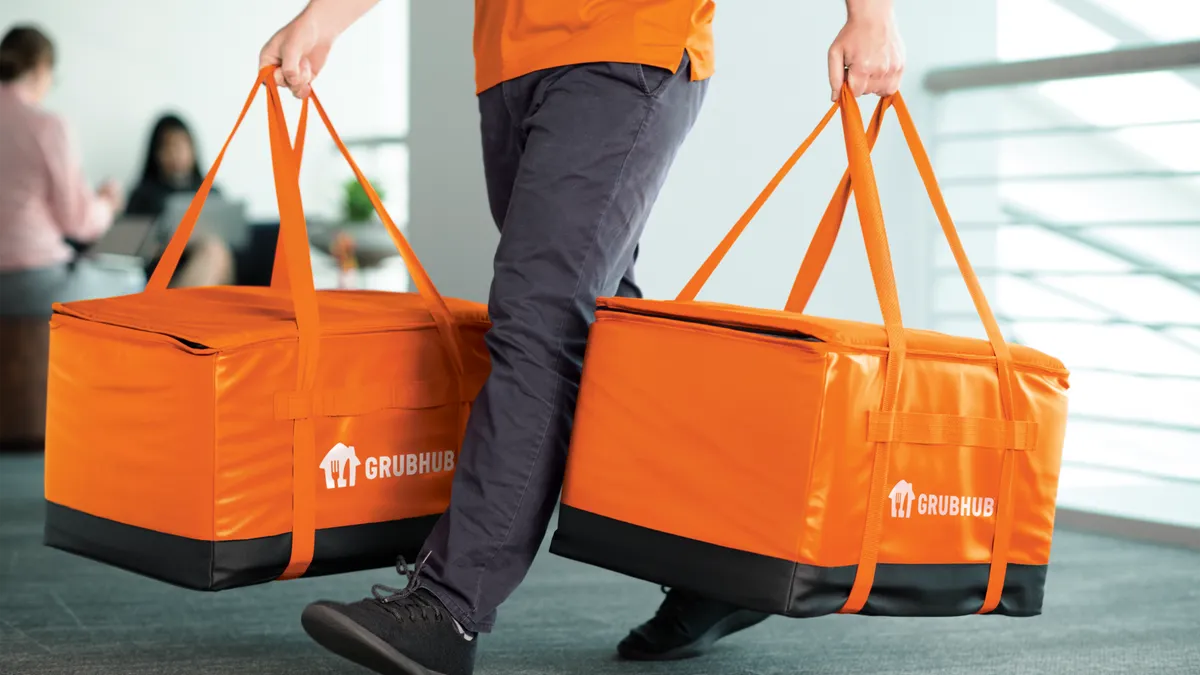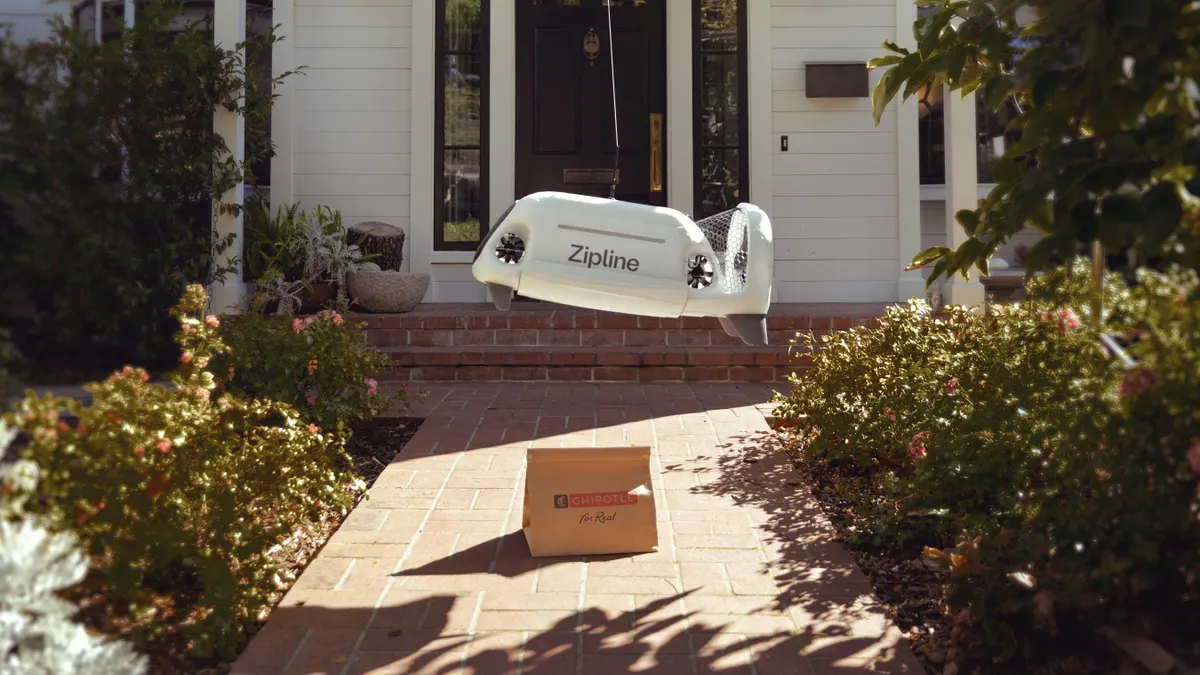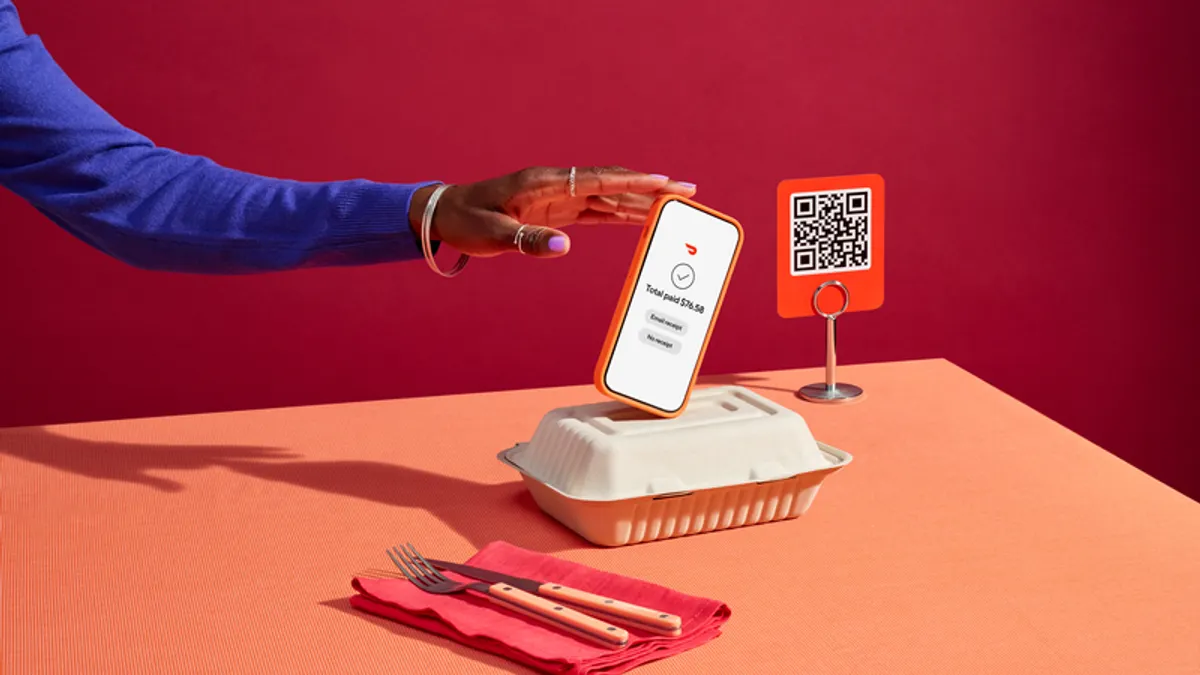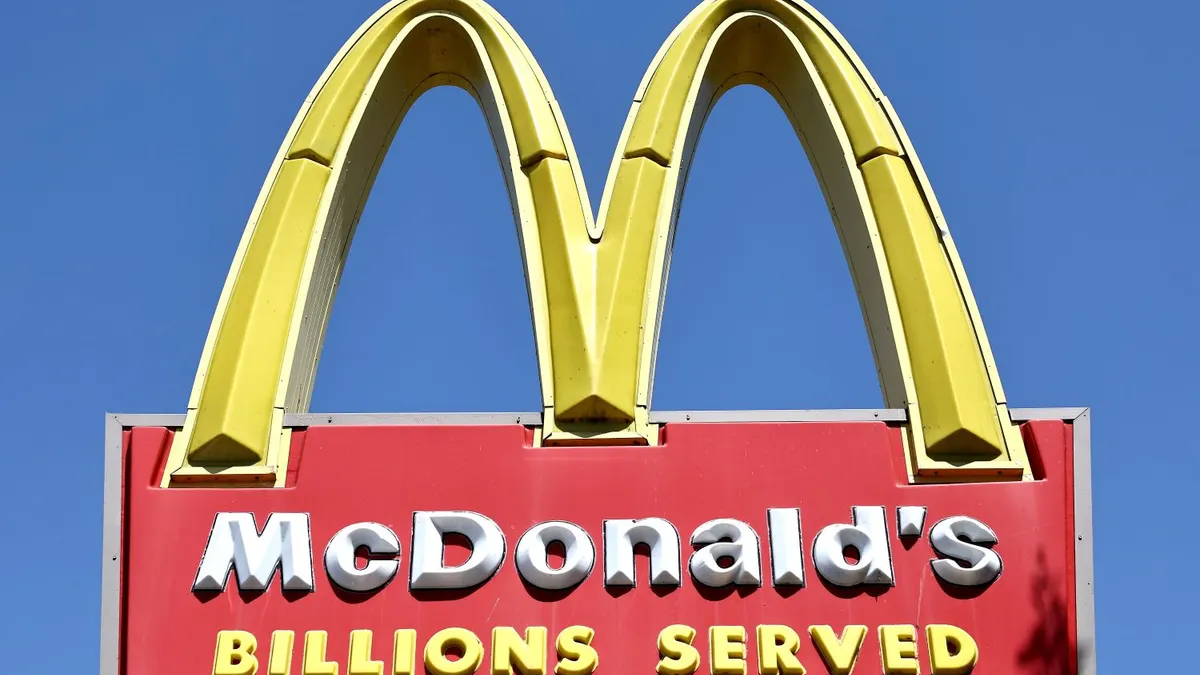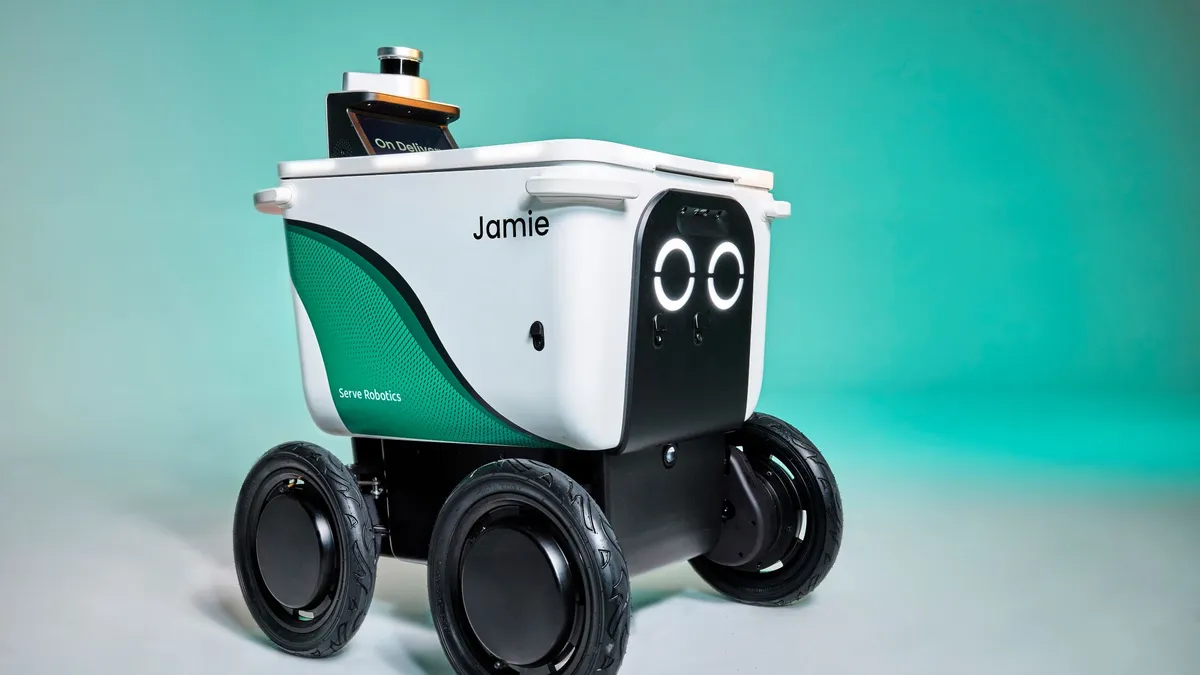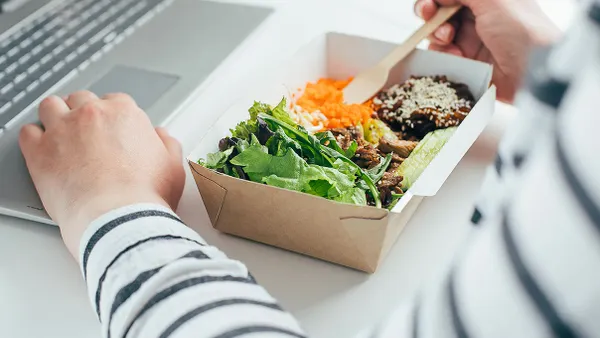Restaurant chains are gripped by the fear of missing out. And the promise of delivery sales, a holy grail for the slow-growing restaurant space, has chains across categories racing to partner with third-party providers.
But, not so fast. At the inaugural Future Restaurants conference in Austin last year, the conversation around off-premise centered on the dangers of striking a delivery deal before operators are ready, and challenged the notion that third-party partnerships are key to survival in today's market.
"I've sat on many round tables with other CEOs of major restaurant groups … and the sentiment that blew me away was 'We have no choice. We have to do this,'" Taziki's CEO Dan Simpson, who took the helm of the fast casual chain in 2018, told Restaurant Dive. "And I was like, I'm the new guy in the room, but we always have a choice. And we need to be more thoughtful about how we go after this."
Throughout the event, Restaurant Dive spoke with restaurant executives about the myths they feel have become entrenched in the delivery discourse, the risks they're willing to take to optimize this channel and how they craft their off-premise strategy.
"The first challenge is to know why you're adding a certain channel. Sometimes you can look around the room and feel the pressure of 'Oh, Chipotle just rolled this out,'" Simpson said. "We've tried to be disciplined about solving problems versus just adding programs."
The consensus on the best path forward? Delivery models that pair online ordering directly through a brand's website with third-party delivery fleets. But even hybrid systems come with obstacles.
It's a hard road to profitability
Major third-party delivery services like DoorDash and Uber Eats can take as much as 15% to 30% off the top of every delivery transaction, a steep cost for emerging chains and legacy brands thanks to shrinking margins.
This arrangement can be especially challenging for restaurants that are heavily franchised and rely on cash-strapped franchisees that would have to take on the burden of processing orders, often through multiple tablets.
Applebee's has been working with third-party delivery providers for over three years, and VP of Strategy and Development Scott Gladstone told Restaurant Dive that the casual brand's biggest hurdle was operator concerns about profitability.
"We've made a big effort over the last couple of months to revisit the way we go to market with third-party delivery and take an approach where … we look at the delivery channel the same way we look at the dine-in and other to-go channels to make appropriate allocations," Gladstone said.
This includes ensuring restaurants recoup their margin by charging customers more via delivery fees and service fees, and giving franchisees discretion over how they tailor delivery menus based on products that hold up best in transit and what consumers are frequently ordering, he said.
Applebee's also launched delivery directly through its website last year, but uses DoorDash drivers to transport the orders. Qdoba, Taziki's and Corner Bakery also use hybrid models, executives told Restaurant Dive.
"I think for a lot of concepts it doesn't make sense to have your own delivery fleet … to maintain their guest data and that guest relationship," Gladstone said. "The [hybrid model] has economic benefits. It helps you leverage your existing infrastructure with your online ordering ... and the opportunity for us is building our direct business."
Keeping drivers in-house
The strategy — where third-party partners process orders and restaurants provide their delivery fleet — was put on the map by Pizza Hut when it partnered with Grubhub last spring, but Panera's transition to a hybrid delivery network was the most eye-catching given its status as a delivery pioneer.
This protects the brands from quality concerns and can help ensure that target delivery times are met, Panera Chief Growth and Strategy Officer Dan Wegiel told Restaurant Dive last summer.
Taziki's is testing this kind of hybrid delivery and third-party delivery at the same time.
In Nashville and Richmond, Virginia, the Greek chain piloted delivery with its drivers, and tried out delivery through Waitr in 12 markets, Simpson said. Taziki's partnered with Waitr because it offered a path to integrate into its system, which allowed the restaurant to continue marketing directly to customers. This was crucial in case the brand needs to convert its diners away from third party in favor of its own delivery, he said.
Stores pay around $3,000 to $4,000 per location for umbrella delivery insurance. If the stores use existing staff to perform deliveries, those employees must reach out to their insurance companies and get covered for commercial driving, which Simpson said costs around $30.
"We need to make sure the person has a vehicle that meets our standards. ... Do they have commercial coverage for their vehicle?" he said. "Most of the times these drivers are coming out of the gig economy already. They already drive for others, understand the model, [and] they understand how they're going to get paid and they're looking for more opportunity in some cases."
Keeping order processing in-house
Another strategy is to work with a partner to allow customers to order directly instead of going through a third-party marketplace. Qdoba VP of Information Technology Eric Rosenzweig told Restaurant Dive that it was in the process of implementing mobile and online food ordering platform Olo for online orders directly through its website and app. Diners can place delivery orders — which will be fulfilled by current partners Uber Eats, DoorDash and Grubhub — without the customer ever engaging with those third-parties.
"You as the guest don’t know [who is completing the order] — you just click delivery and it shows up," he said. "We went to Olo because we wanted to have integration with third-parties so that the customer could be ours. … We need to make our experience so frictionless ... that there's not a need to go to DoorDash."
Nearly all of Corner Bakery's delivery partners, including segment leaders as well as regional players, are similarly integrated into its system, Director of Off-Premise Business Development Ed Keller told Restaurant Dive. But while operators are happy with these partners and the brand has negotiated low fees and chosen not to embark on an expensive delivery marketing campaign, profitability is still elusive.
"The [hybrid model] has economic benefits. It helps you leverage your existing infrastructure with your online ordering."

Scott Gladstone
VP of Strategy and Development, Applebee's
"This thing keeps evolving and nobody's making money at it," Keller said.
On the other hand, Corner Bakery’s catering business is stronger than its delivery piece, driving 25% of its annual unit volume of $2.3 million per store, Keller said. The restaurant has a fleet of delivery vans and drivers for catering, but relies on third-parties to deliver individual, small off-premise orders.
"When we want to move the needle at $2.3 million, we need some help. And third-party helps that," he said. "We tested self-delivery at the beginning of this year. … We just couldn't generate the volume. ... I'm not McDonald's. I'm not Starbucks."
Direct access to diners is key
Much of the restaurant industry's concern over who owns delivery customers in third-party partnerships is hinged on control of data and brand experience.
When it comes to fear of botched brand experiences in the hands of third-party delivery workers, Keller wonders if restaurants are wringing their hands over an issue that diners aren't easily put off by.
"Are we trying to set a [quality] standard that really isn't expected? I don't know the answer to that, but I suspect that we are," he said. "Do I care how [a delivery worker] is dressed. No, as long as they don't smell and they aren't sloppy. … If I have to heat up my order a little bit, would that bother me? No."
Still, studies show that when things do go wrong during the last mile of delivery, 62% of customers blame the restaurant and the third-party partner — a risk that restaurants still face with a hybrid delivery scheme.
"Amazon just changed its algorithm so that [it's] promoting [its] own brands above the most relevant brands. ... and there are a lot of risks that the same thing might happen in third-party delivery at some point."

Scott Gladstone
VP of Strategy and Development, Applebee's
But all four execs emphasized data's value and forecasted that possession of consumer information will become increasingly contentious as the delivery market evolves.
"Amazon just changed its algorithm so that [it’s] promoting [its] own brands above the most relevant brands. It's based on search and there are a lot of risks that the same thing might happen in third-party delivery at some point," Gladstone said. "So it's critical that brands develop a direct delivery experience for their customers."
Gladstone said this shift has already begun to take place as delivery platforms build their own loyalty programs to make guests stickier, and that hybrid models can help restaurants expand their off-premise footprint but still maintain control of the guest relationship online.
Simpson also said restaurants can look to the hospitality industry as an indicator of the power struggle to come.
"There are some good lessons before us. This happened in the hotel industry and you had aggregators push a lot of hotels into the position where they no longer had control over their customer or their pricing," he said. "That's a very bad position to be in."







